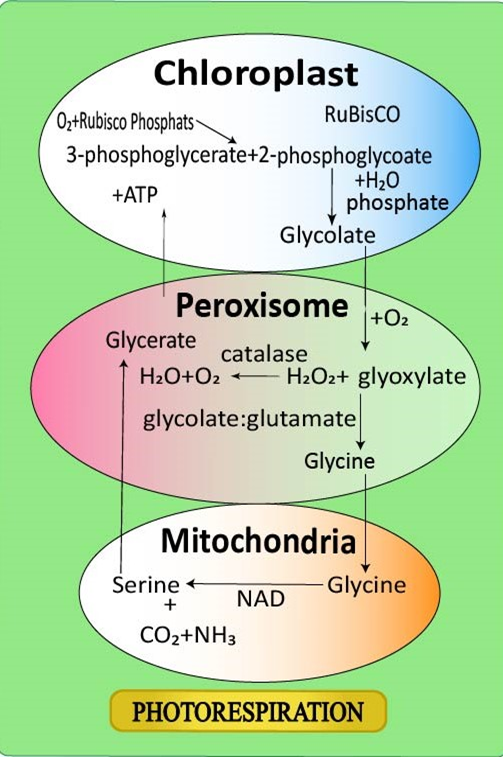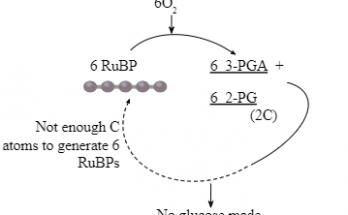Photorespiration Occurs in C3 Plants. Photorespiration is a metabolic process occurring in the presence of light, leading to the excess evolution of carbon dioxide (CO2).
Table of Contents
Organelles Involved in Photorespiration

Chloroplasts
Within chloroplasts, high concentrations of oxygen (O2) prompt the reaction between an enzyme called RuBP oxygenase and ribulose-1,5-bisphosphate (RuBP). This reaction leads to the splitting of RuBP into 3-phosphoglyceric acid (PGA) and 2-phosphoglycolic acid (PGly). PGly is subsequently converted into glycolic acid.
Peroxisomes
The glycolic acid produced in chloroplasts is transported to peroxisomes. In peroxisomes, glycolic acid reacts with oxygen, undergoing oxidation and resulting in the formation of glyoxylic acid.
Mitochondria
Glyoxylic acid undergoes further transformation into the amino acid glycine. Glycine is then transported from peroxisomes to mitochondria, where two molecules of glycine combine with carbon dioxide (CO2) and ammonia (NH3) to form serine. During this process, one molecule of CO2 is released, and serine is transported out of the mitochondria, potentially being converted into carbohydrates.
Significance of Photorespiration
Interference with the Calvin Cycle
Photorespiration competes with the Calvin cycle, the primary pathway for carbon fixation during photosynthesis. This competition diminishes the efficiency of carbon dioxide fixation, consequently reducing the overall productivity of the plant.
Energy Consumption
Unlike respiration, which produces ATP and NADH₂, photorespiration consumes energy in the form of ATP. This energy expenditure decreases the overall energy efficiency of the plant.
Loss of Fixed Carbon Dioxide
Photorespiration leads to the loss of up to half of the fixed carbon dioxide during photosynthesis in the form of RuBP. Consequently, the availability of carbon for other vital metabolic processes within the plant is reduced.
